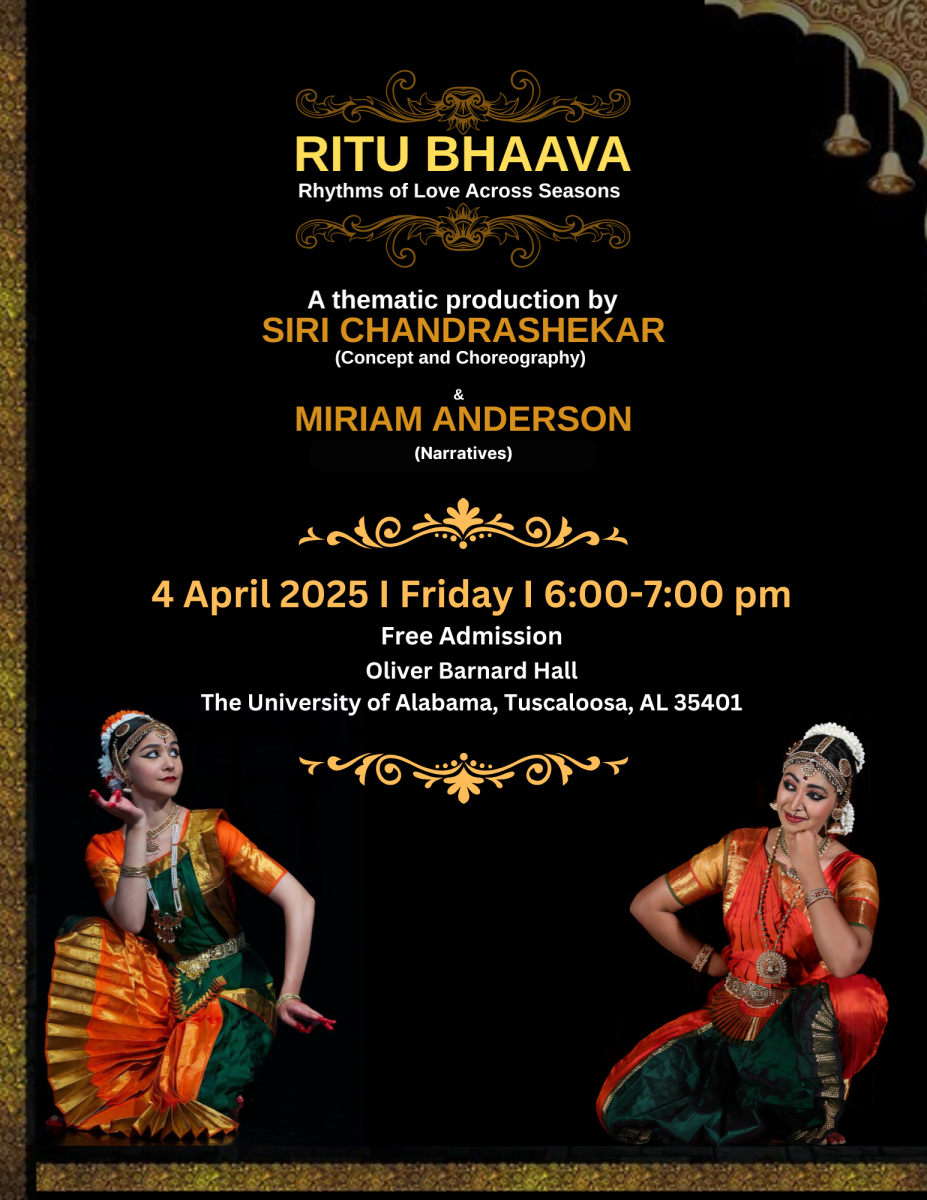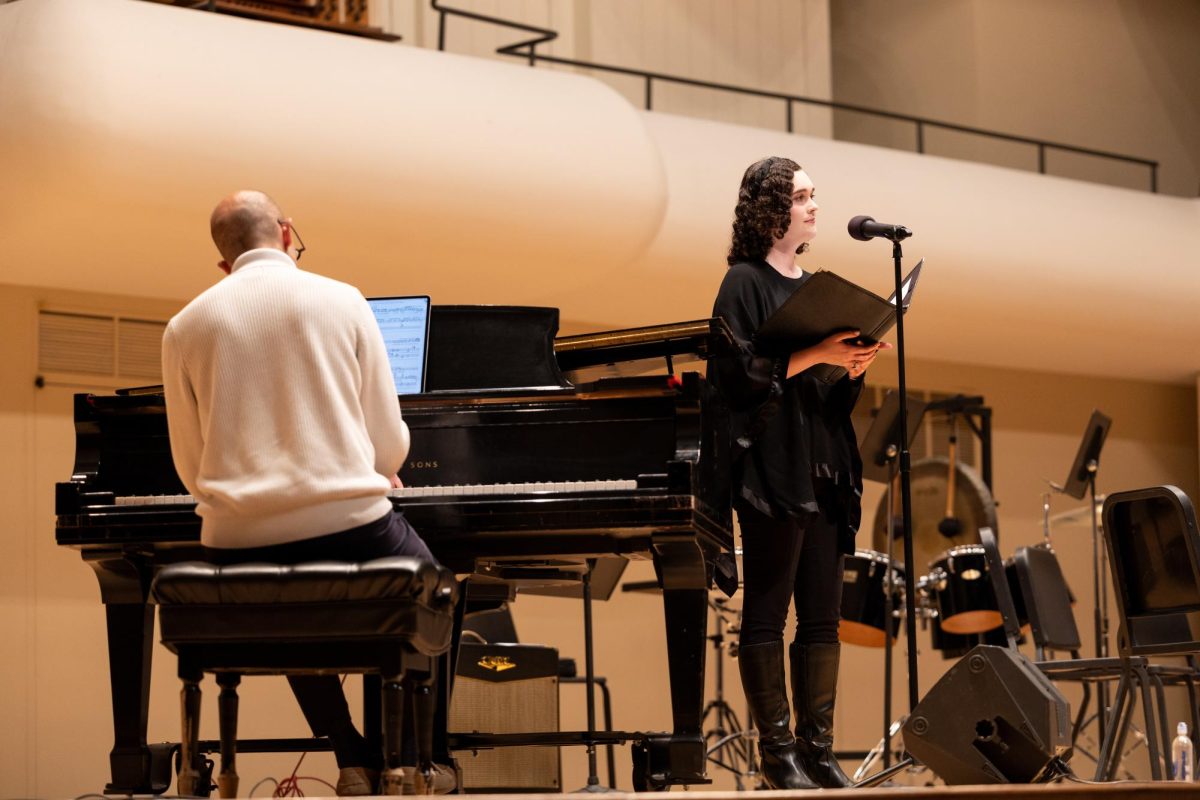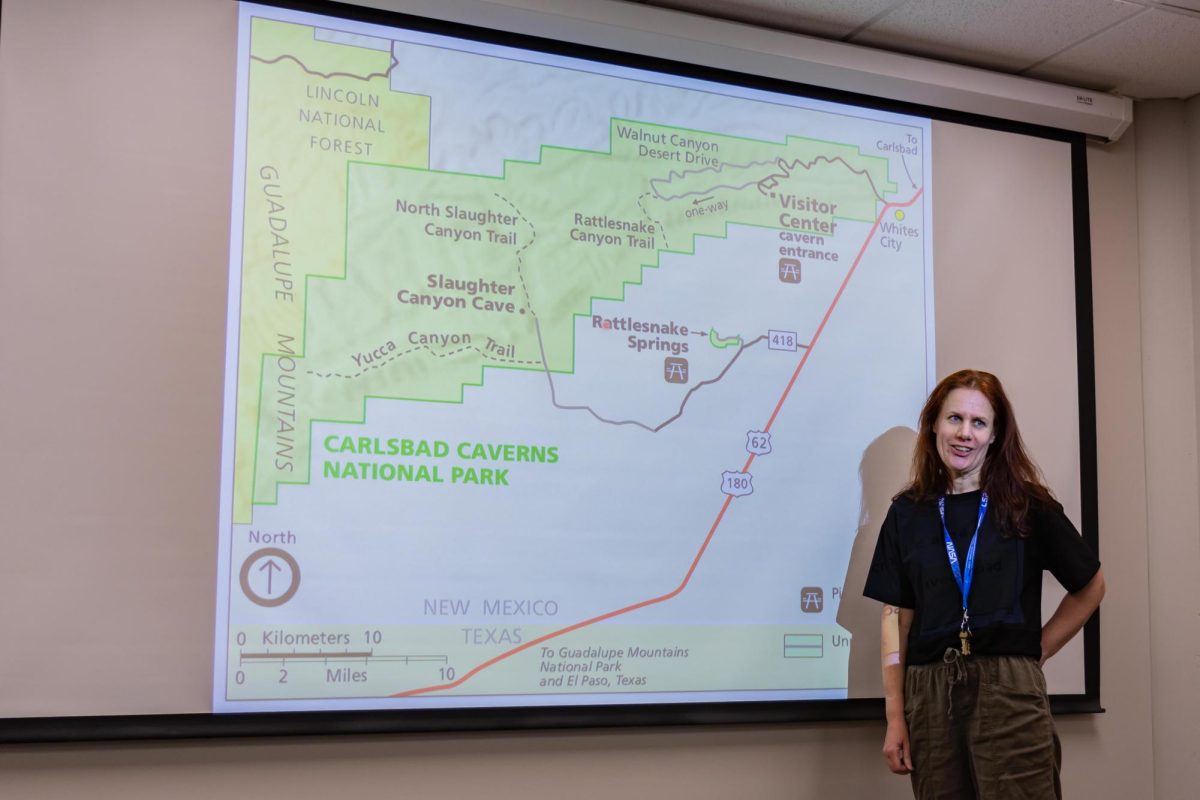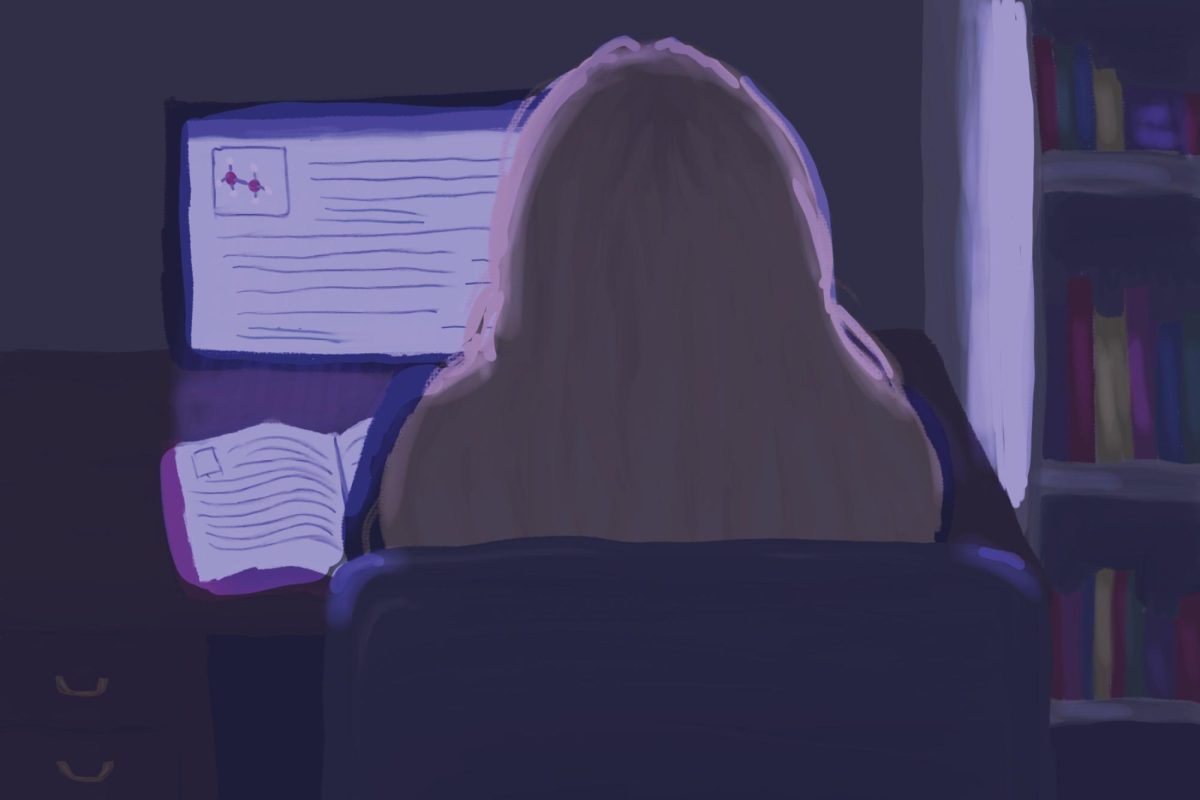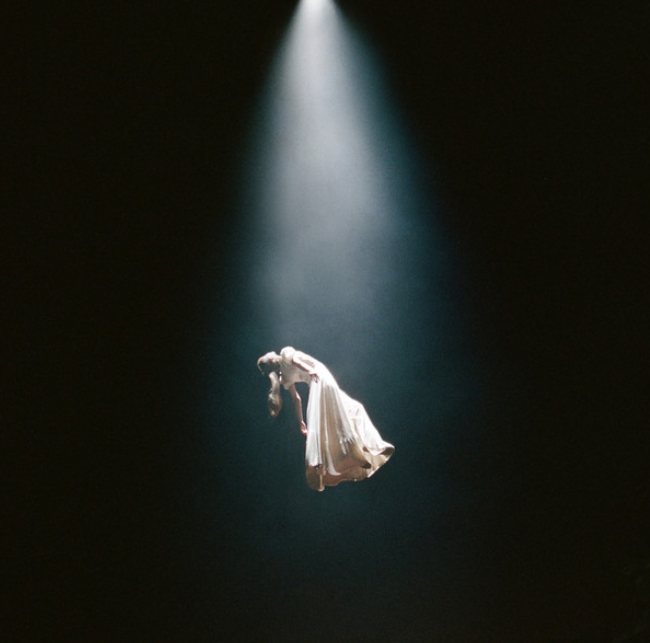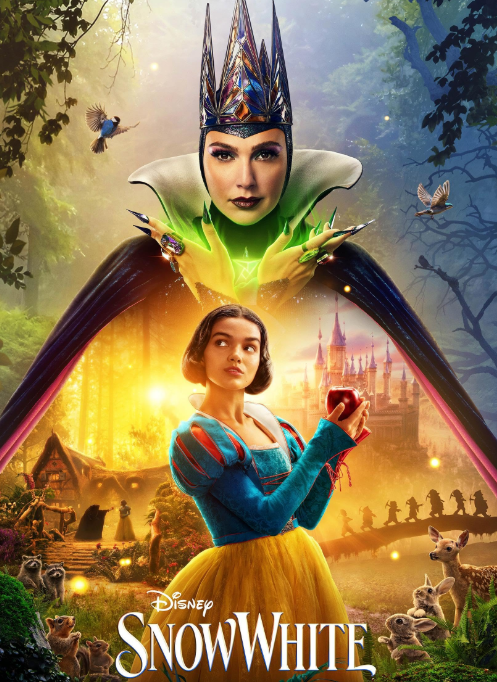She stood in the middle of nowhere, with the sun beating down on her and the temperature upward of 90 degrees. It had been days since her last encounter with soap or shampoo, and surrounding her were thousands of sweaty strangers. But last summer, in the pit during Portugal. The Man’s Bonnaroo set, Katie Garmon was exactly where she wanted to be.
“I met people from all over the country, and we were all sitting there talking about how much we loved the band,” Garmon, a junior majoring in management, said. “I love how music unites everyone. Once we got in the pit, we couldn’t stop dancing, and I just remember that as being one of my best festival experiences.”
Garmon is not alone in her love for music festivals. Not only has worldwide music festival attendance skyrocketed in recent years, but according to Billboard.com, more new U.S. music festivals emerged in 2013 than any previous year.
Although music festivals have become more popular than ever before, their existence is nothing new. In fact, some historians consider the first music festival to be the musical contests during the Pythian Games of ancient Greece, which date all the way back to the sixth century B.C.
Fast-forward a couple thousand years, and you’ve got two of the first modern music festivals: the Newport Jazz Festival, established in 1954, and the Newport Folk Festival, established in 1959. Bob Dylan’s electric rock performance at the 1965 Newport Folk Festival paved the way for rock music’s prominence in the festival scene, and in 1967, the Monterey Pop Festival became one of the first true rock festivals.
(See also “Festivals bring variety to every stage“)
“All the people who liked Bob Dylan playing electric rock music kept going to festivals like that,” Eric Weisbard, professor of American studies, said. “[Festival] music changed after 1965, and by 1967, it’s the summer of love, and it’s accepted that if young people go to a music festival, rock music is going to be at the core.”
Just two years later, 1969 hosted both the famous Woodstock Music & Arts Fair and the infamous Altamont Speedway Free Festival. Structurally, both festivals were disasters. Neither had the resources necessary to support their hundreds of thousands of attendees. However, Woodstock is fondly remembered as “three days of peace and music,” while Altamont is known for its widespread violence, most notably the stabbing of 18-year-old Meredith Hunter by a Hells Angels member during the Rolling Stones’ headlining set.
“It becomes clear after both of those that no one really knows what they’re doing when it comes to festivals,” Weisbard said. “So from 1970 to 1990, the core of live performance for youth music becomes this much more structured arena or stadium concert experience.”
American festivals reemerged in the early 1990s, when Lollapalooza became one of the first of many touring music festivals. It wasn’t until the late 1990s and early 2000s, with the establishment of Coachella, Austin City Limits and Bonnaroo, that single-destination festivals became the norm.
“These festivals almost sell themselves to a certain extent,” Weisbard said. “I’m not convinced that people go to [music festivals] based exactly on who’s playing. I think it’s less about breaking the scene, making a certain kind of music mainstream, and it’s more about having this slightly underground but communal experience.”
For Bonnaroo Music and Arts Festival, one of the nation’s largest music festivals, this communal experience is vital.
“One of the things that we love the most about [Bonnaroo] is the fact that the community really takes ownership of the festival,” said James Shinault, director of event engagements at AC Entertainment, which founded and produces Bonnaroo. “Whether it’s your first time there or you’ve been coming every year since it started, the minute you step onto the site, you’re a Bonnaroovian. It’s one of those ‘you don’t understand ‘till you’ve been there’ sort of experiences.”
Widely regarded by Rolling Stone, SPIN Magazine, USA Today and more as one of the nation’s best music festivals, Bonnaroo draws upwards of 70,000 people to the small, rural town of Manchester, Tenn., for four days every June. The very first Bonnaroo, held in 2002, sold 70,000 tickets in two weeks without spending a single dollar on marketing or advertising.
Although music plays an integral role in the festival, Bonnaroo has much more to offer than just the bands playing on stage. Attractions like the Big Ass Water Slide, the Ferris wheel and the Silent Disco tent, as well as the festival’s camping element, contribute to the one-of-a-kind Bonnaroo experience.
“If you go to any music festival and all you remember about it is most of the bands that you saw, then the music festival didn’t do you justice,” Shinault said. “It’s about creating the experience beyond the music. The lineup gets people there, but it’s the experience that gets people to come back the next year.”
(See also “Summer music festivals key in summer plans“)
Garmon is just one of the many loyal Bonnaroovians who returns to Manchester year after year. She will attend her fourth Bonnaroo in a row this summer, but Garmon’s love of music festivals began long before ever setting foot on Bonnaroo grounds. One of her favorite festival moments took place at Music Midtown in Atlanta, Ga., at the age of 6 or 7 years old.
“We were standing in the pit for Cake, and my dad had me up on his shoulders,” Garmon said. “I was so small, but being up there, I could see everything. Even at that age, that was the moment I realized how much live music meant to me. It was such a different experience, so many different kinds of people who all liked the same music. I was hooked.”
Attending a music festival provides a more immersive experience than attending a concert does, Garmon said.
“I’ve been to hundreds of live shows in my life, but a festival is different,” Garmon said. “You really get to escape from reality for a while. At Bonnaroo you barely have any phone service, there are no showers, and you kind of forget about life other than Roo.”
Music festivals like Bonnaroo provide an unrivaled opportunity to experience live music, but one need not forgo sleep or personal hygiene to participate. In fact, thanks to Tuscaloosa’s Druid City Arts Festival, it’s possible for UA students and Tuscaloosa residents to enjoy a day of live music without having to spend a cent or drive more than 15 minutes from home.
The Druid City Arts Festival began as a Creative Campus initiative in 2010. The fifth annual DCAF, scheduled for April 5 at Government Plaza, will be the Tuscaloosa Tourism & Sports Commission’s first time presenting the event without the help of Creative Campus.
“We’re trying to evolve it to be more of a regional community festival, not just college students,” said Brandt Garrison, manager for communications and public relations at the TTSC. “We feel like Creative Campus did a great job putting in that foundation, but we’re just trying to expand the types of folks that come to the festival. We want to make sure that there’s more things for little kids and different types of music and all different genres, just kind of taking what Creative Campus did and expanding it in every direction.”
This year’s lineup includes The Old Paints, Southview Elementary Drum Ensemble, Jimi Squeezebox and the Cajun Gods of Zydeco, The Wheelers, Chase Evans, Alabama Blues Project, Smoke and Arrows, Sweet Tea Trio and John & Jacob.
The TTSC hopes for the festival to eventually grow large enough to attract attendees from outside of Tuscaloosa. These non-residents would most likely spend money at local bars, restaurants, retail shops and hotels, increasing DCAF’s economic impact on the city.
The festival has never charged admission. Instead, it’s funded by sponsorships and the TTSC’s annual budget.
“We do think that [charging] admission would give us more resources to provide a better festival,” Garrison said. “But then at the same time, we love that it’s a free opportunity and a free event for the people of Tuscaloosa. We don’t want that to ever be a hindrance for somebody not to be able to come.”
Not only does DCAF provide exposure for local artists and support the Tuscaloosa music scene, but it also gives the people of Tuscaloosa an opportunity to come together and experience something new.
“It helps grow our community,” Garrison said. “It’s something fun and exciting for people. All different types of folks from all different walks of life come in and enjoy the arts scene. I think that that’s a really great thing for our community to have.”
(See also “The doctors are in: Wakarusa music festival to welcome Tuscaloosa student band The Doctors and the Lawyers“)



